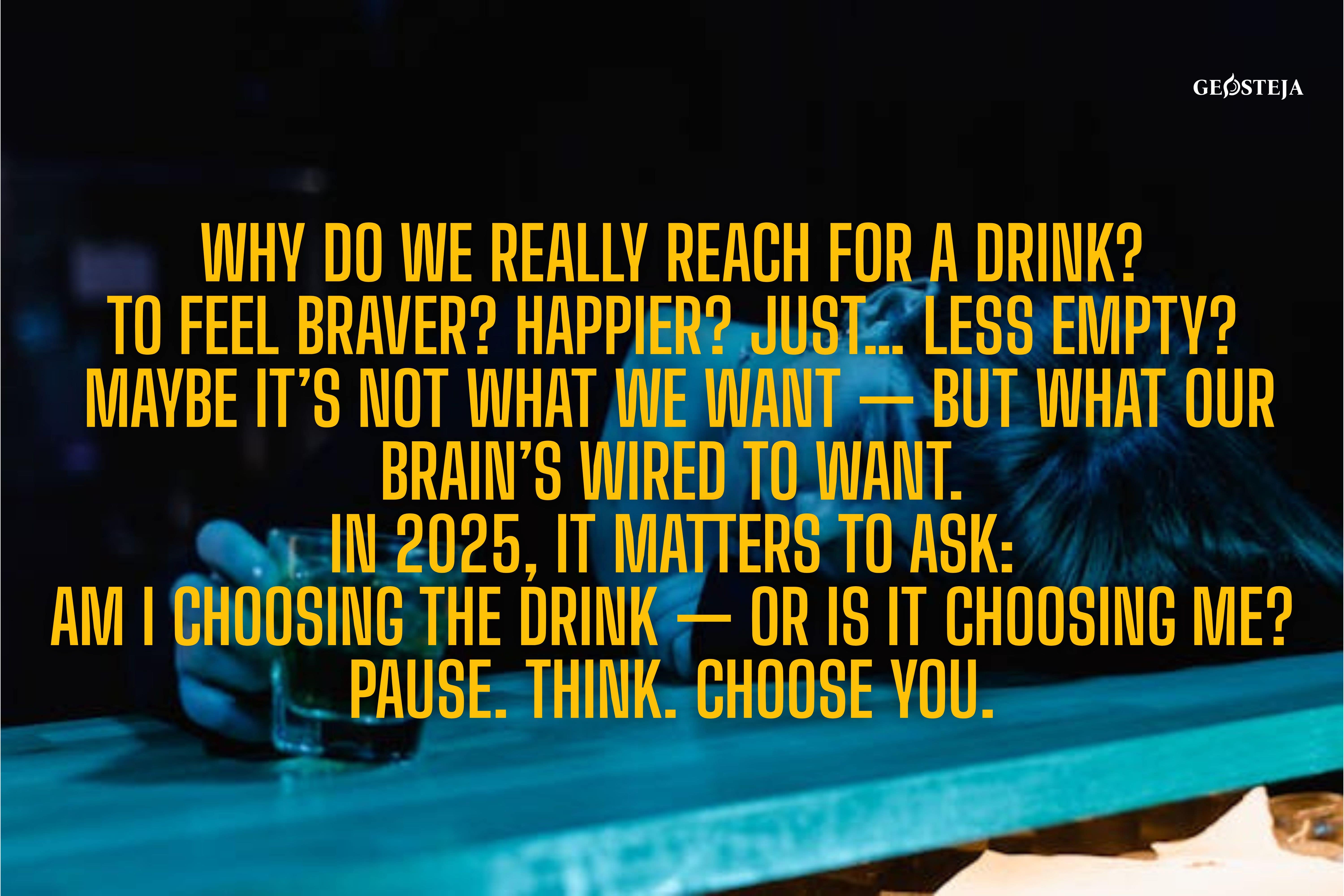The Strive to Drink: Why Alcohol Still Tempts Us — and What We Can Do About It

Rethinking Alcohol in a Generation That Wants More Than Escape
Why We Drink (Even When We Don’t Want To)
In a world that constantly promises quick rewards, alcohol keeps its grip—not just as an ancient tradition but as a modern escape. For young people growing up in an age of hyper-visibility, relentless comparison, and instant dopamine hits, the bottle can look like an easy answer.
But what if we looked beyond the “yes or no” of drinking—and asked why we reach for it in the first place? Drawing on neuroscience, history, and cultural shifts, this article explores how alcohol tempts, traps, and transforms us—and how, in 2025 and beyond, we might reclaim control.
1. A Global Habit, Rooted in the Brain
At first glance, drinking seems harmless: a toast, a sip, a brief escape. Biochemically, that first sip raises dopamine levels, the “reward” neurotransmitter that makes us feel connected, excited, and alive.
But here’s the twist: after the dopamine surge, brain activity dips below baseline. That leaves us feeling emptier than before—sparking the urge for another drink. Over time, what started as celebration becomes routine, and routine becomes compulsion.
This pattern isn’t just individual. Over 380 million people worldwide meet criteria for alcohol use disorder. In Eastern Europe, it’s 1 in 10 adults. These aren’t abstract numbers—they’re a reflection of how human brains are wired to seek comfort, even at great cost.
2. Why Alcohol Hooks Us: Beyond Biology
While dopamine makes alcohol feel rewarding, deeper forces keep us coming back:
- Easy access: History shows when alcohol becomes harder to get, society drinks less. During the U.S. Prohibition (1920–1933), public drunkenness and alcohol-related liver disease halved. After alcohol returned to store shelves, so did higher consumption.
- Family patterns and genes: Children of alcohol-dependent parents have a significantly higher risk—even if raised apart—due to genetic predisposition and learned behaviors. Starting to drink before age 15 increases the risk of addiction by over 80% compared to starting after 25.
- Cultural cues: Ads, movies, holiday rituals—they all pair alcohol with joy, belonging, and status. Even seeing a familiar logo or hearing a party song can trigger dopamine, making us crave the drink before it’s even poured.
3. Alcohol and Youth: The Hidden Costs
For teenagers and young adults, the stakes are higher. Drinking before the brain’s reward circuits fully mature can:
- Make it harder to feel joy from everyday activities
- Increase long-term anxiety and depression risk
- Damage parts of the brain linked to memory and self-control
- Shape social identity around alcohol: “partier,” “rebel,” “cool kid”—labels that can stick
Beyond health, there’s something more subtle: the loss of real experience. Alcohol can become the main way to cope, celebrate, or connect—crowding out creativity, curiosity, and authentic growth.
4. The Future: Will We Still Be Drinking?
In 2025 and beyond, the landscape of alcohol is changing:
- Tech and health data: Apps now track drinking patterns, warn about binge risks, and even pair with smartwatches to show real-time alcohol effects on heart rate and sleep.
- Functional drinks: Brands market “smart” beverages with adaptogens, CBD, or vitamins—promising calm without the cost. Critics call this another dopamine hack, but it shows young people want alternatives.
- Social shifts: “Sober curious” and “mindful drinking” movements encourage questioning why we drink, not just how much.
Yet the challenge remains: our brains still respond to alcohol the way they always have. Tech can help, but real change means asking deeper questions.
5. Finding Freedom: What Actually Helps
• See the pattern
It starts with honesty: noticing when drinking isn’t about fun, but relief. Talking with friends, journaling, or therapy can help map these patterns.
• Build your “why”
Quitting “because it’s bad” rarely works. Real motivation is personal: saving money for travel, protecting mental health, staying sharp for creative projects, or showing younger siblings a new path.
• Create friction
Keep alcohol out of your room, skip parties where you feel pressure, and build habits—like sports or art—that release dopamine naturally.
• Join or build a community
Groups like Sober Grid or local meetups let people share without shame. Shared stories break isolation and remind us we’re not alone.
• Expect setbacks
Relapses don’t mean failure—they mean you’re still learning. With reflection, each relapse can make your strategy stronger.
• Move your body
Regular exercise boosts dopamine and serotonin, reducing cravings. Even daily walks can shift mood and motivation.
6. Beyond “Don’t Drink”: A Deeper Challenge
Telling youth “just say no” isn’t enough. Alcohol addiction isn’t weakness—it’s what happens when brains wired for reward meet a society selling quick comfort.
The real question isn’t only whether to drink, but how to build a life where alcohol isn’t needed. That takes courage, reflection, and sometimes, help.
In a future where temptation is always one tap away, real strength won’t be just about refusal—it will be about creating meaning, connection, and joy without shortcuts.
Drink or Think? The Choice Ahead
In 2025, young people are questioning old habits, choosing clarity over numbness, and redefining what celebration looks like. You don’t have to reject the past to choose your own path—but it starts by asking:
Do I drink because I want to… or because I don’t want to feel something else?
If we can face that question honestly, the future might not be sober—but it could be more conscious, creative, and free.
#youth #alcohol #dopamine #self-awareness #addiction #mental health #GEOSTEJA
0 Comments